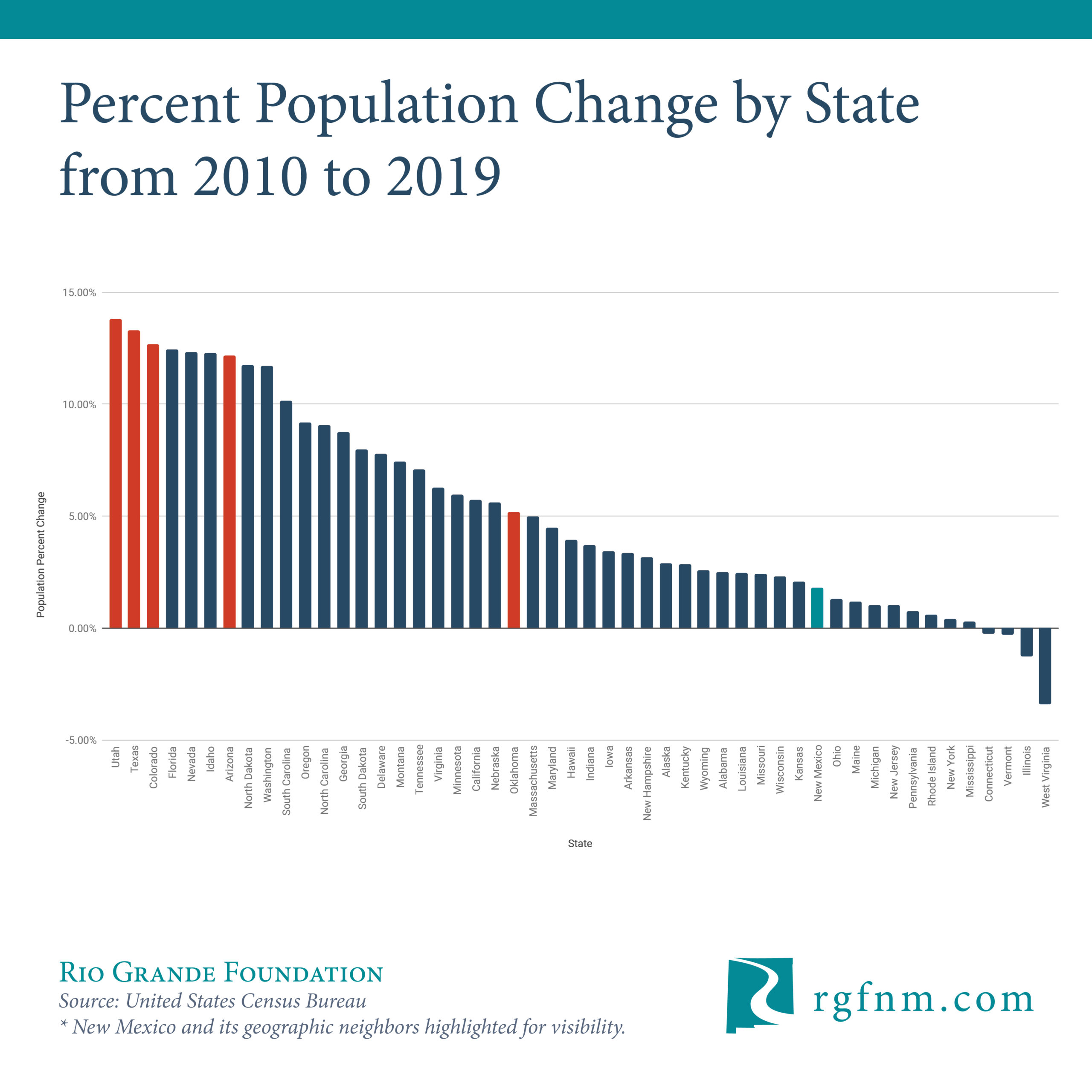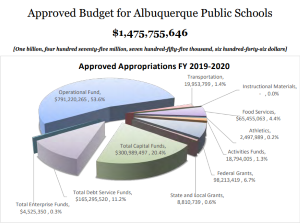Newspaper article: Lujan Grisham’s budget highlights contrast between New Mexico/Colorado
01.14.2020
The following appeared in the Ruidoso News on January 14, 2020.

Gov. Lujan Grisham recently released her budget to be considered by the Legislature in the upcoming 30 day session. As expected, there is a lot of new spending thanks to the continued growth of oil and gas production in the Permian Basin.
After a 12 percent boost in General Fund spending last year, the Gov. is requesting yet another big increase. This year she’s asking for 8.4 percent.
According to news reports, the nearly $7.7 billion spending plan includes a proposed 4% salary increase for New Mexico teachers and more money for school districts with a large number of “at risk” students.”
The budget would provide for “free” college and expand funding for child-care assistance and pre-Kindergarten programs statewide. “Another $320 million would be spent to set up a new early childhood endowment fund.”
All of this spending seems destined to please, but New Mexico is a poor state. Many of its social ills are the result of poverty. We at the Rio Grande Foundation believe that the best anti-poverty program is a job.
That’s why when it comes to government spending we look at Colorado as a model. That State which continues to see strong growth (albeit minus the “boom” in oil and gas) is giving taxpayers a break in 2020. As reported by Fox 31 Denver, Colorado’s income tax rate will be dropping from 4.63% to 4.5% this year (thanks to that State’s Taxpayers Bill of Rights which was recently affirmed at the ballot box).
With the passage of HB 6 last year in New Mexico, our top income tax rate will soon rise to 5.9 percent while Colorado’s drops to 4.5 percent. This may not seem to be a big difference but it is one of the big reasons that Colorado is one of the fastest growing states in the entire country.
In fact, over the last decade, according to Census data released at the end of 2019, Colorado was the 3rd-fastest growing state in terms of population at 12.7 percent. Only Utah and Texas which also neighbor New Mexico grew faster. And where did New Mexico rank in population growth between 2010 and 2019? The answer is 38th-fastest at 1.8 percent, a bit faster than Ohio, but not quite as fast as Kansas.
Colorado and New Mexico both have little in the way of rivers and surface water, they have good weather although New Mexico’s is much better, and New Mexico is in the midst of an unprecedented oil and gas boom. They also both happen to be “blue” states.
Colorado’s “secret sauce” is that it strictly limits spending growth and taxation. As a percentage of GDP (the overall state economy) Colorado state and local governments spend 14.8 percent. New Mexico spends 23.39 percent. Of the states surrounding New Mexico, “blue” Colorado has the smallest government while New Mexico has by far the largest.
What does this mean? Simply put it means that the tax hikes (HB 6) passed last year were totally uncalled for and unnecessary. It means that in the upcoming 30 day session, we the voters of New Mexico need to hold the Legislature accountable. Rather than growing the government even more, we need real reforms to the State’s broken and regressive gross receipts tax. We need to eliminate taxation of Social Security. And finally, the Legislature simply needs to stop the accumulation of new government spending programs that may not survive the next economic downturn or the next decline in oil and gas prices.
Colorado’s is not the only economic model worth following. People are moving in large numbers to Utah and Texas (the fastest and 2nd fastest growing states) as well as Arizona (the 7th). New Mexico can learn lessons from each of them, but the simple truth is that new government spending is not the way to make New Mexico (or any other state) more economically attractive.
Paul Gessing is the President of New Mexico’s Rio Grande Foundation. The Rio Grande Foundation is an independent, non-partisan, tax-exempt research and educational organization dedicated to promoting prosperity for New Mexico based on principles of limited government, economic freedom and individual responsibility
























